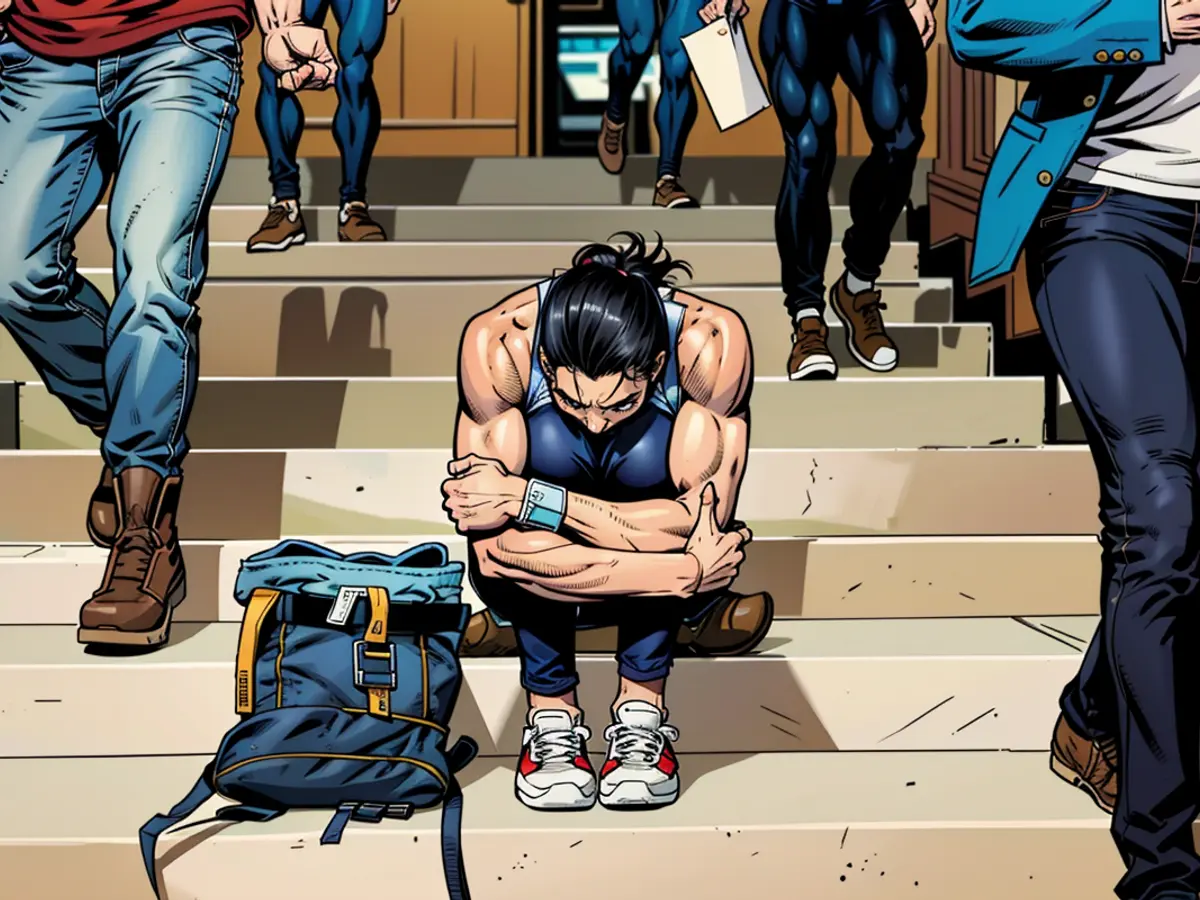Trotz einiger Fortschritte kämpfen Jugendliche <unk> vor allem Mädchen <unk> seit der Pandemie immer noch mit ihrer psychischen Gesundheit, zeigt der Bericht.
Die Youth Risk Behavior Survey, die seit mehr als drei Jahrzehnten vom US-amerikanischen Zentrum für Krankheitskontrolle und -prävention durchgeführt wird, um das Wohlbefinden von amerikanischen High-School-Schülern zu messen, hat eine Verbesserung von zwei Prozentpunkten bei der Prozentzahl derjenigen, die angaben, regelmäßig Gefühle von Traurigkeit oder Hoffnungslosigkeit zu empfinden, von 2021 bis 2023 festgestellt. Allerdings ist die allgemeine Lage für Teenager immer noch recht düster.
Im Jahr 2023 gaben 40 % der Schüler, die an der Umfrage teilgenommen haben, an, regelmäßig Gefühle von Traurigkeit oder Hoffnungslosigkeit zu empfinden. Dieser Wert lag niedriger als der Höchstwert von 42 % im Jahr 2021, ist jedoch immer noch etwa 10 Prozentpunkte höher als vor einem Jahrzehnt.
Darüber hinaus gaben 20 % an, ernsthaft über Selbstmord nachzudenken, was einen Anstieg gegenüber dem Jahr 2013 bedeutet. Neun Prozent gaben an, einen Selbstmordversuch unternommen zu haben; dies liegt niedriger als der Höchstwert von 10 % im Jahr 2021, ist jedoch immer noch höher als der im Jahr 2013 berichtete Wert von 8 %.
Die jüngste Runde der Umfrage wurde von mehr als 20.000 Schülern der neunten bis zwölften Klasse aus einer repräsentativen nationalen Stichprobe von 155 Schulen abgeschlossen.
"Die Zahlen zeigen uns, dass unsere Jugend leidet und wir eine mentale Gesundheitskrise haben", sagte Dr. Jill Emanuele, Vizepräsidentin für klinische Ausbildung am Child Mind Institute in New York City. Sie war nicht an der Umfrage beteiligt.
Wenn die Zahlen nach Geschlecht getrennt wurden, ergab sich ein deutlich anderes Bild. Mehr als die Hälfte der Mädchen (53 %) gaben an, regelmäßig traurig oder hoffnungslos zu sein, im Vergleich zu 28 % der Jungen. Im Jahr 2013 lagen diese Werte bei 39 % für Mädchen und 21 % für Jungen.
"Mädchen kämpfen definitiv mehr", sagte Emanuele und betonte auch, dass die Unterschiede zwischen den Geschlechtern möglicherweise nicht so groß sind, wie sie scheinen. "Mädchen sind traditionell verbaler und offener über einige ihrer Herausforderungen, während Jungen das nicht so tun, obwohl ich glaube, dass sich das ändert."
Forscher des CDC erkannten die Schwere der Probleme an, waren jedoch optimistisch Regarding recent improvements in some of the metrics measured in the survey.
"We are not out of the woods by any stretch. We are still, I believe, experiencing a crisis in mental health among young people", said Dr. Kathleen Ethier, director of CDC’s Division of Adolescent and School Health. "But when we look at the data from 2021 to 2023 we’re starting to see these glimmers of hope."
Some of the biggest improvements in persistent feelings of hopelessness over the past two years had been among multiracial, Asian and Hispanic students.
And Ethier said she was happy to see that the number of Black students who reported attempting suicide in the past two years had gone down.
"In 2021, the percent of students who said they attempted suicide among Black youth was also coinciding with some really disturbing data around mortality to suicide among young people of color, and so we’re hopeful that in seeing that fewer Black youth are attempting suicide, that hopefully we’ll also see the same similar decreases in mortality", Ethier said.
Even as there were slight improvements, the survey showed some groups are suffering more than others. About half of kids who identify as gay, bisexual, transgender and queer said they experienced poor mental health in the last month, and this group was far more likely to report suicide attempts and experience violence.
"We are still seeing really substantial disparities for LGBTQ+ youth in experience of violence and poor mental health and suicidal thoughts and behaviors that remains a huge concern for us", Ethier said.
Emanuele said the numbers for LGBTQ+ kids were not a surprise, but they were disheartening to see.
"Youth from the LGBTQ+ population absolutely report higher levels of mental health challenges because they are trying to operate in a society that, across the board, doesn’t accept them", Emanuele said, "So I mean, when you have to deal with it on a regular basis ... that’s a real challenge to your mental health."
Emanuele said the crisis continues to be exacerbated by a lack of mental health resources and providers for kids and teens, but parents can help.
"We all want children to have some kind of mental health literacy, and we don’t want it to all come from TikTok", she said.
Parents should start by educating themselves with trustworthy online resources. Talking to their teens to open a channel of communication is a worthwhile first step, she said.
"Being able to to say, ‘How are you feeling? What’s going on? And to be able to dialog that together, that’s one of the first things, I think", she said.
The report highlights a two-point decrease in the percentage of students experiencing persistent feelings of sadness or hopelessness from 2021 to 2023, but Dr. Jill Emanuele from the Child Mind Institute emphasizes that the overall health of teenagers is still a significant concern. Parents can help alleviate this issue by educating themselves with reliable resources and opening a dialogue with their children about their feelings.








